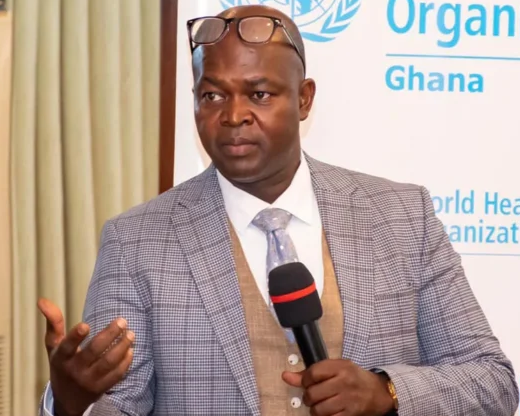Ghana is still grappling with the burden of severe malnutrition (Kwashiorkor) among children more than nine decades after it was first identified in the country.
To this end, the Director-General of the Ghana Health Service (GHS), Professor Samuel Kaba Akoriyea, has expressed grave concerns over the situation and called for collective efforts to prioritise child health and nutrition for a healthier population.
He was speaking during a courtesy call on management of the New Times Corporation (NTC), publishers of The Ghanaian Times and Spectator in Accra last Wednesday.

Known as the “Disease of the deposed baby when the next one is born” coined from the Ga language, Kwashiorkor is a nutritional disease associated with protein deficiency and mainly affects children at weaning.
“It’s been 92 years since Cecily Williams, a Jamaican pediatrician then working at the Princess Marie Louise Hospital in Accra, defined the term Kwashiorkor.
“Yet, two-thirds of Ghanaian children are still malnourished, according to UNICEF,” he lamented.
Prof. Akoriyea pointed to some cultural misconceptions surrounding childhood nutrition, saying; “some still equate fat children with good living, overlooking the risks of childhood obesity, which is now on the rise.”
“We have not been able to send the right messages and some people think malnutrition is only about being thin, but over nutrition is also a growing problem,” he said.
The D-G emphasized the need for a coordinated approach to tackle the issue and called on stakeholders to treat child health as a shared national priority.
According to the 2022 Ghana Demographic and Health Survey (GDHS), 18.2 per cent of children under five were stunted (short for their age), 12.6 per cent were underweight, and six per cent were wasted (thin for their height).
These figures fall short of World Health Organisation (WHO) thresholds for low-burden malnutrition, which recommends wasting be below five per cent, stunting under 15 per cent, and underweight prevalence under 10 per cent.
The 2023 UNICEF’s State of the World’s Children Report notes that Ghana is among countries with “moderate to high” risk of failing to meet child nutrition targets, citing insufficient investment in nutrition-sensitive interventions and weak integration across sectors like agriculture, education, and water, sanitation, and hygiene (WASH).
With barely five years to meet global health targets, including the Sustainable Development Goals (SDGs), such as SDG 2 on Zero Hunger, Ghana risks not meeting the goal if urgent steps are not taken.
Malnutrition refers to deficiencies, excesses, or imbalances in a person’s intake of energy and/or nutrients.
The term addresses three broad groups of conditions: Under nutrition, which includes wasting (low weight-for-height), stunting (low height-for-age) and underweight (low weight-for-age), micronutrient-related malnutrition, which includes micronutrient deficiencies (a lack of important vitamins and minerals) or micronutrient excess; and overweight, obesity and diet-related non-communicable diseases (such as heart disease, stroke, diabetes and some cancers.
In children, malnutrition not only compromises their physical and cognitive development but also undermines national productivity and economic growth.
Poor nutrition in early childhood can lead to irreversible damage in brain development, reducing educational achievement and lifelong earning potential.
BY ABIGAIL ANNOH
